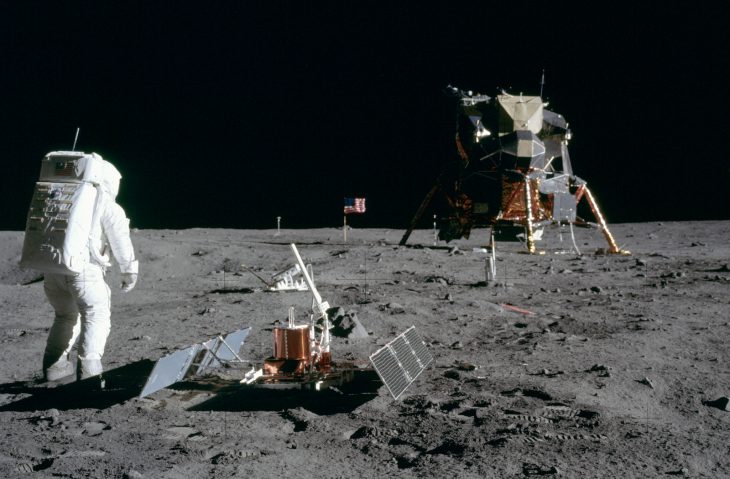By Andrea Svendsen, Managing Editor.
On July 20, 1969, the Apollo 11 mission culminated in Neil Armstrong and Buzz Aldrin landing the Apollo Lunar Module Eagle on the Moon — a mission decades in the making and which effectively ended the Space Race. Getting to the Moon required the development of new advanced technologies under Project Gemini — with aluminum being critical material for the success of these efforts.
Space Launch
The Saturn V rocket is considered one of the greatest engineering achievements in history, since it’s size and payload capacity was far larger than any of the previous rockets that had successfully flown at that time. Consisting of three stages (all of which utilized liquid oxygen for fuel, the Saturn V was primarily constructed of aluminum due to its high strength, low weight characteristics. Alcoa was a major supplier to the program, providing over a million pounds of specialty aluminum alloy 2219 for the Saturn V rocket series alone.
The first stage of the Saturn V (known as S-IC) was constructed by the Boeing Company and incorporated the largest aluminum forgings produced in the U.S. at the time (14 ft long and 1,799 lbs in weight) for the thrust structure. The second stage (S-II), built by North American Aviation, was designed with a single common bulkhead made from a honeycomb structure made of phenolic resin sandwiched between two aluminum sheets. The use of a common bulkhead saved 7,900 pounds of weight. Built by the Douglas Aircraft Company, the third stage (S-IVB) comprised a liquid oxygen tank and a liquid hydrogen tank, which were separated by a common bulkhead made from two aluminum domes separated by a honeycomb insulation.
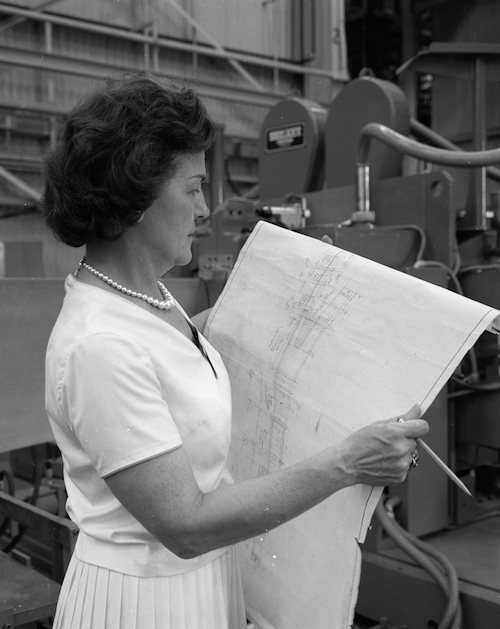
These advancements were made thanks to engineers like Margaret W. ‘Hap’ Brennecke, who was the first female welding engineer to work in the Materials and Processes Laboratory at NASA’s Marshall Space Flight Center. In particular, she was a pioneer in aluminum alloys. Throughout the Saturn era, Brennecke made “critical decisions on the selection of lightweight high-strength metals and welding techniques for the huge Saturn stages. Specifically, Brennecke provided metallurgical engineering support for solving the problems of obtaining the required heat treatments, cold work, and metallographic structure leading to high strength and reliability in thick aluminum welds of cryogenic fuel tanks. She also contributed to the important research efforts leading to optimal thermal-aging treatments for those high-strength aluminum alloys.”
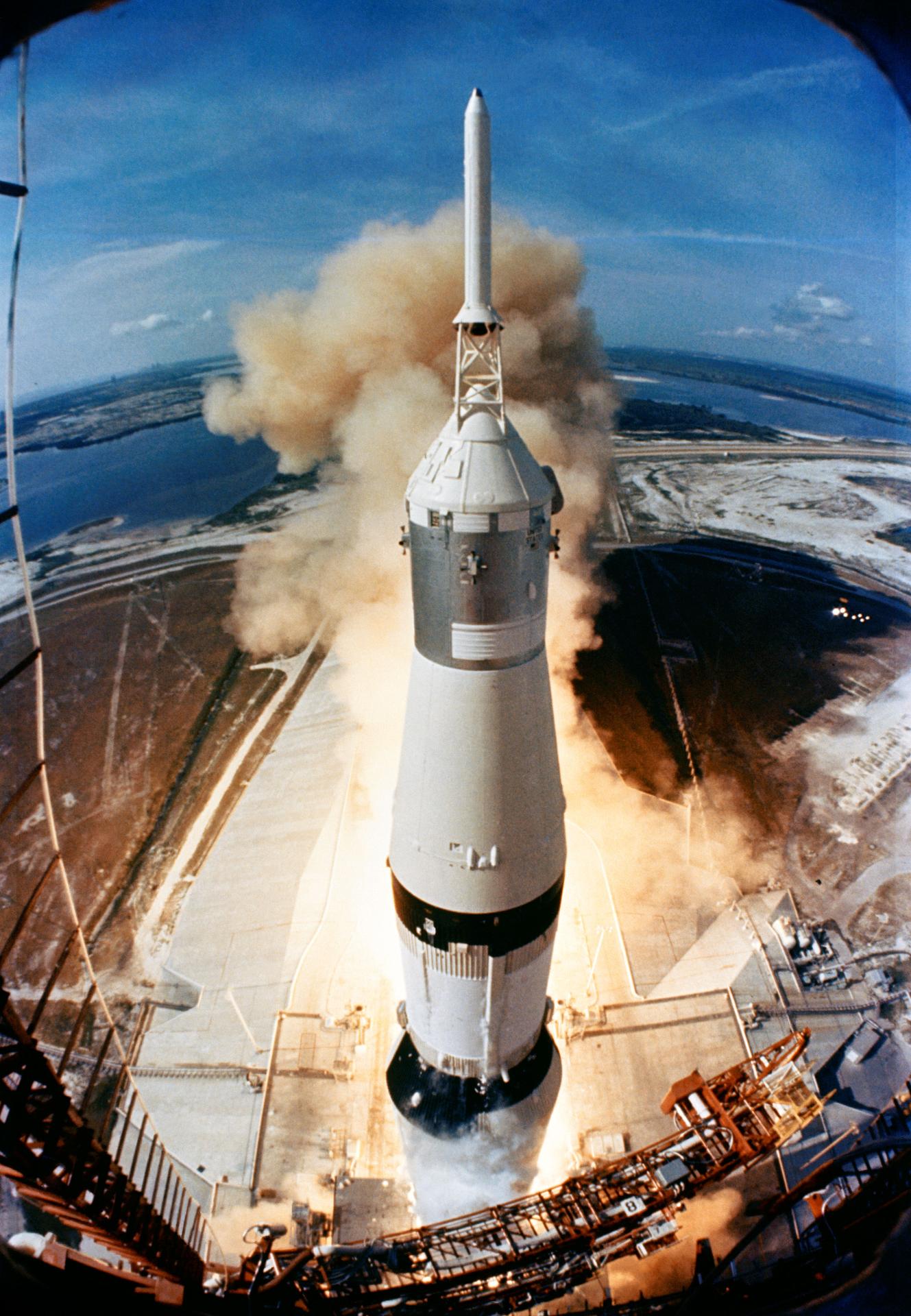
Command and Service Module
The Command and Service Module (CSM) comprised two distinct units. The Command Module housed the crew, spacecraft operations systems, and reentry equipment, while the Service Module carried most of the consumables (oxygen, water, fuel, etc.) and the main propulsion system.
The Command Module was a conical pressure vessel (max. 3.9 m diameter at the base and 3.65 m in height) made of an aluminum honeycomb sandwich-bonded between sheets of aluminum alloy with a heath shield made of brazed stainless steel. A NASA paper on the construction of the module states:
“The inner crew compartment is built in two assemblies: the compartment structure and the system support structure. The compartment structure is made of aluminum and is fabricated in two sections. The forward section consists of an access tunnel, a forward bulkhead, and a forward sidewall. The aft section consists of an aft sidewall, an aft bulkhead, and a circumferential machined ring. The two sections, when joined, form the spacecraft’s pressure vessel.
“The forward section welded inner skin is fabricated from panels, four machined longerons, window frames, a machined circumferential girth ring, and fittings. Aluminum honeycomb core and outer face sheets are thermally bonded to the inner skin and cured in a giant autoclave (similar to a giant pressure cooker). Attachments and fittings are then bonded to the structure for installation of the system support structure, wiring, tubing, and other equipment. The access tunnel, which is bonded to the forward bulkhead, includes a forward ring for mounting the docking ring, the pressure hatch cover, and external frames which absorb loads from parachute deployment and the recovery sling.
“The aft section welded inner skin is fabricated from panels, machined ring, and fusion-welded bulkheads. Aluminum honeycomb core and outer face sheets are thermally bonded to the inner skin and cured in a giant autoclave. External frames and internal attachments are bonded to the structure for the system support structure.
“The inner crew compartment is completed when the forward and aft assemblies are circumferentially trimmed and fusion welded at the girth ring. The final assembly operation is the bonding of aluminum honeycomb core fillers and facing sheets.”
Attached to the back of the Command Module, the Service Module was a cylinder (3.9 m in diameter and 7.6 m long) with an outer skin formed from 2.5 cm thick aluminum honeycomb panels. The interior was divided by milled aluminum radial beams into six sections around a central cylinder.
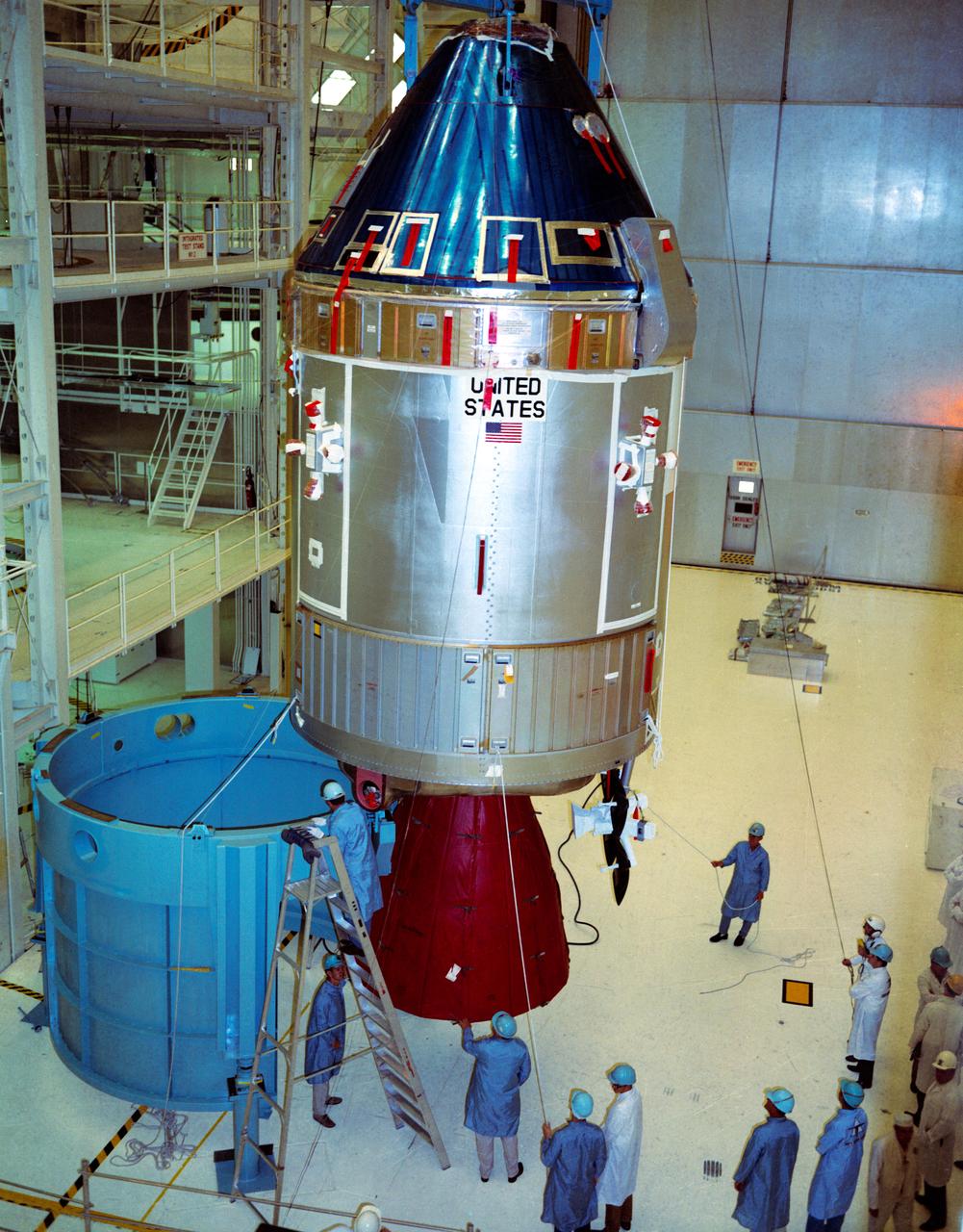
Lunar Module
The Eagle lunar module used in the Apollo program was built almost completely of aluminum. The crew compartment, for example, is primarily comprised of aluminum alloy with titanium for the fittings and fasteners. Alcoa contributed a significant amount of the aluminum used in the project — including aluminum honeycomb shock absorbers built into the module legs, which were designed to compress upon impact, thus protecting the lunar module during landing.
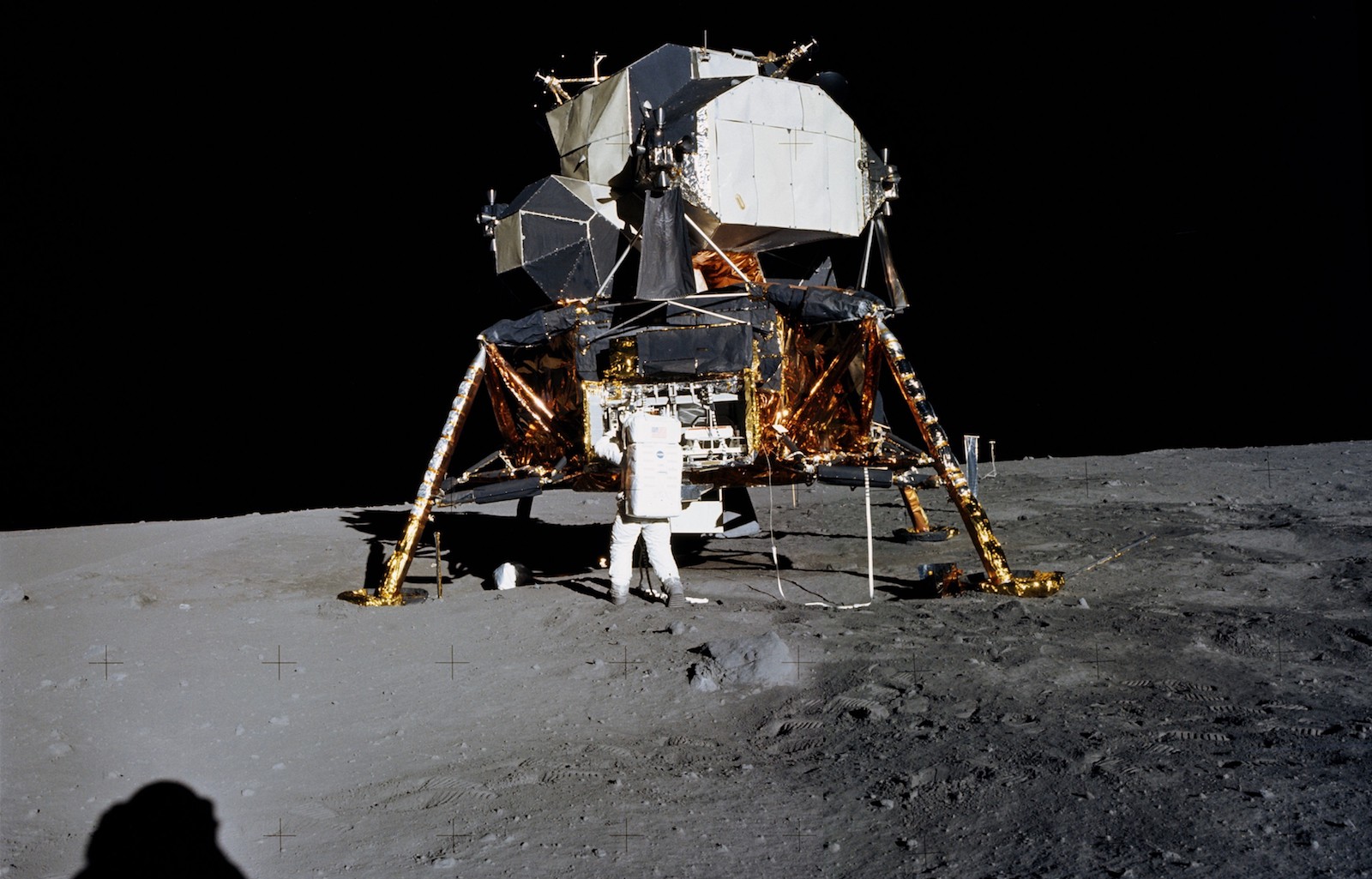
Collecting Samples
Even various apparatus designed to collect samples while the astronauts were exploring the lunar surface were designed with aluminum. For example, the Apollo Lunar Sample Return Container (ALSRC), also known as a rock box, was an aluminum box with an aluminum mesh liner used to carry collected samples from the Moon and protect them from the turbulent return to Earth.
In addition, the Solar Wind Composition Experiment consisted of an aluminum foil sheet (1.4 m by 0.3 m) that was deployed on a pole facing the sun for 77 minutes. During this time, solar-wind particles embedded themselves into the foil, which was then returned to Earth for laboratory analysis.
Conclusion
Throughout 2019, NASA, the Smithsonian, and a number of other organizations are hosting a number of special events in honor of the 50th anniversary of the Apollo 11 mission to the moon — a landmark event that would not have been possible without the use of advanced aluminum alloys. Chosen in the 1960s for the lunar mission due to its light weight and ability to withstand severe stressors, aluminum is still being used today to create next-generation space launch and crew module applications, including new innovations like the Falcon 9 launch system developed by SpaceX, the first rocket to be able to recover and reuse its first stage boosters.

